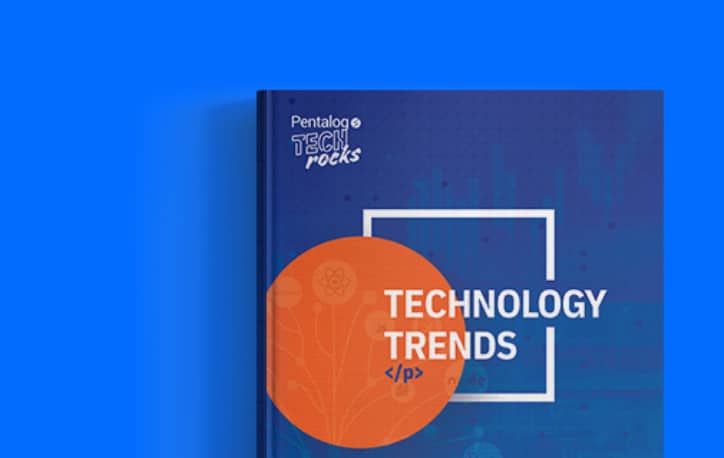When your data lies, who pays the price? You.
Imagine this:
You spend days cleaning the data and building reports, and then when you finally submit it to relevant teams, someone points out:
“Why is the same customer showing up twice in this report?”
And suddenly, no one trusts the numbers anymore. The questions start flying. Decisions get pushed back. And your “clean” data comes back under review.
Whether you’re unifying customer records, migrating clean data to a new platform, or prepping for an AI initiative, matching is the make-or-break moment of your project. If you get it wrong, everything goes downhill. And yet, many teams don’t realize just how critical data matching is until they’re already knee-deep in the mess.
That’s why choosing the right data matching solution matters (the wrong one can leave you with more problems than you started with).
But what exactly should you be looking for?
This post walks you through the critical, no-nonsense questions to ask when evaluating a data matching software. These aren’t generic RFP checklist items. These are real, practical questions that cut through marketing fluff and help you separate surface-level tools from serious data quality solutions.
Questions to Ask When Evaluating a Data Matching Tool
Here are the top ten questions high-performing teams ask when evaluating data matching solutions to avoid costly mistakes:
1. What type of data sources can it connect to – and how easily?
A matching tool can have great algorithms, but if you can’t get your data into it easily, none of that really matters.
If the tool can’t ingest from the sources and the data formats you work with daily – or requires a developer, connector license, or workaround every time you want to add a new source – you’ll end up spending more time on plumbing than actual matching.
Ask:
- Can it connect to flat files (CSV, Excel, TXT)?
- Does it support relational databases (SQL Server, Oracle, PostgreSQL, MySQL, etc.)?
- Can it connect to cloud data platforms like Snowflake, BigQuery, Redshift?
- Does it support REST APIs, FTP, or shared folders for ingesting from external systems?
- Can I schedule regular ingests or set up real-time syncing?
🚩Red Flag: Some tools claim to support “any source” but require custom development or paid connectors for anything outside their native ecosystem.
✅DataMatch Enterprise supports a wide range of file formats, database types, and cloud sources out of the box, so you can start matching your data records without jumping through complex integration hoops.
2. What type of matching does it support – and how customizable is the logic?
“Acme Corp.”, “Acme Corporation,” “ACME CORP.” Are those the same company?
Your matching engine should be able to figure it out.
Matching isn’t just about catching exact duplicates. You might need fuzzy algorithms, phonetic logic, or token-based comparison (sometimes all at once) – along with exact matching – to accurately resolve inconsistencies, identify duplicate data, and find true matches.
That’s why your tool should support multiple data matching algorithms and let you control how each one is applied – without relying on developers for every adjustment.
Ask:
- What matching types does it support?
- Can I apply different matching strategies per field (e.g., fuzzy matching for name, exact for date of birth)?
- Can I customize thresholds, weights, and rules through a user interface?
- Can it handle domain-specific patterns (like nicknames, swapped name order, or address abbreviations)?
✅ DataMatch Enterprise lets you build layered, field-level match logic – blending exact, fuzzy, phonetic, and token-based approaches – without needing custom code. That means better control, better data accuracy, and far less manual review.
3. Does it include data profiling and cleansing capabilities?
Matching on dirty data leads to poor results. Data profiling helps you identify issues upfront so you know what you’re working with, while cleansing allows you to fix them. Without these steps, your matching accuracy suffers and cleanup becomes reactive instead of proactive.
Ask:
- Does the tool offer built-in profiling to analyze data quality before matching?
- Can I identify blanks, patterns, outliers, or inconsistencies through the profiling interface?
- Can I standardize, format, enrich, and validate records as part of the data matching process?
- Can I fix data issues within the same platform before running a match?
- Are cleansing actions auditable and reversible?
✅ DataMatch Enterprise includes robust profiling and cleansing capabilities to help users explore, understand, and improve data before matching it. This ensures you don’t miss any matches due to inconsistencies like spelling mistakes or variations, abbreviations, different formats, etc.
4. How well does it perform on fragmented, inconsistent, multilingual, or industry-specific data?
Enterprise data is messy. You’re likely dealing with:
- Incomplete fields
- Misspelled names
- Conflicting sources
- Multiple languages
- Industry-specific terminology
So ask the hard question.
Ask:
- Has this tool been used successfully in environments like mine (e.g., healthcare, finance, retail, government)?
- Can it handle multilingual and multi-format data?
- Does it handle misspellings, nicknames, swapped fields, and abbreviations?
- What’s the real-world accuracy rate customers achieve?
✅ DataMatch Enterprise helps teams across industries routinely reach up to 96% matching accuracy, even with fragmented and inconsistent inputs.
5. How much control do I have over match rules and configuration?
No two organizations treat their data the same way. Some prioritize email, others prioritize address. Some want tight matching rules; others need broader thresholds.
If your matching engine is a black box, you’re stuck with whatever logic it uses.
Ask:
- Does the matching tool allow adjusting weights and thresholds across fields?
- Can I define custom rules for matching records?
- Is there a visual interface to set logic, or do I need to write scripts?
Pro Tip: Look for tools that balance control with usability. You don’t want to email your IT team every time you need to tweak a match rule.
6. How fast is it and how much data can it really handle?
Let’s be honest: anyone can match 1,000 rows. But what happens when you throw 5 million records at the system?
Ask:
- What’s the average processing time for large datasets?
- Is the engine multi-threaded or parallelized?
- Are there known performance benchmarks (for batch and real-time use)?
Example performance questions:
| Requirement | What to Ask |
| Batch jobs | How many records/hour can it process? |
| Real-time matching | Does it support API-based matching with low latency? |
| Deployment | Can it scale horizontally across CPUs or cloud clusters? |
7. Can it integrate into your tech stack – without forcing a rebuild?
Matching is rarely the only step in a real-world workflow. The full value of a matching solution is realized when it’s used as part of a broader data quality, governance, migration, or analytics pipeline.
A data matching tool should plug into your existing ecosystem – whether that’s Excel, SQL Server, Snowflake, Salesforce, or an ERP – without requiring a full re-architecture.
Ask:
- What file types, databases, and applications does the matching tool support natively?
- Does it offer APIs for integration into ETL, MDM, or data pipelines?
- Do I need to write custom connectors or scripts?
✅ DataMatch Enterprise can work with Excel, CSV, flat files, SQL Server, Oracle, PostgreSQL, MySQL, and more – out of the box.
8. Does it offer APIs for real-time and batch integration?
APIs can make or break integration speed and automation.
Ask:
- Does the tool support REST APIs for triggering match processes?
- Can APIs be used to query match results or automate workflows?
- Is API access documented and secure?
- Can the API be used for record-level matching (e.g., real-time deduplication during entry?)
✅ DataMatch Enterprise includes a full set of REST APIs to trigger jobs, extract results, and integrate match logic into larger workflows.
9. Is it built for business users – or just IT?
Here’s where many tools fall flat. They assume that only technical users will manage data matching. But in reality, business analysts, marketers, and compliance teams often need access, too.
Ask:
- Is the interface usable by non-technical users?
- Can I preview results and manually review matches before committing changes?
- Can I configure the logic myself, or do I need a developer?
Look for solutions that support “human-in-the-loop” workflows – where automation does the heavy lifting, but users still have visibility and control.
10. What happens after matching? Is there a full workflow?
Matching is just one step. You still need to:
- Merge or deduplicate records
- Export clean results
- Push updates to source systems
- Track what changed (and when)
Ask:
- Does the tool include deduplication and survivorship rules?
- Can I export matched/unmatched records separately?
- Are logs/audit trails available for downstream compliance?
Without a complete post-match workflow, you’re left stitching together tools, and increasing the risk of errors.
11. Does the tool support workflow orchestration across the full lifecycle?
As mentioned above, matching doesn’t happen in isolation. You need to ingest data, apply rules, match records, and export results – possibly on a schedule or based on triggers. Workflow orchestration allows you to chain these steps together and automate them with minimal manual effort.
Automating match-related tasks across systems can significantly reduce manual handoffs and ensure consistency.
Ask:
- Can I define a sequence of steps (e.g., load → cleanse → match → export)?
- Does it support schedules and event-based workflows?
- Can I create reusable pipelines for different matching tasks?
✅ DataMatch Enterprise includes built-in workflow automation features that allow you to orchestrate multi-step data preparation and matching pipelines, reducing hands-on time and improving consistency across runs.
12. Does it offer a flexible pattern builder to handle data quirks?
Not all matching challenges are algorithmic. Sometimes, you need to account for real-world naming conventions, nicknames, abbreviations, or swapped field orders. A pattern builder helps you define custom logic to clean and standardize data before matching – without writing code.
It’s especially useful for ensuring consistent data standardization across similar fields (e.g., phone formats, IDs, addresses).
Ask:
- Can I define and reuse matching and cleansing patterns for names, addresses, and other fields, across projects?
- Does the tool support building custom regex patterns through a UI?
- Can I apply patterns as rules during standardization or matching?
- Does it support rule-based transformations (e.g., expanding abbreviations, reordering names)?
- Can I preview pattern effects before applying them at scale?
✅ DataMatch Enterprise includes a visual pattern builder that allows teams to create, test, save, and reuse transformation logic for specific data types, so you get better results with fewer false positives.
13. What does onboarding and support look like?
Even the best tools fall short without good support. You don’t want to be 48 hours from a go-live and stuck waiting for an email reply.
Ask:
- What does the implementation process look like?
- Is there a dedicated onboarding team?
- What support channels are available (phone, email, chat)?
- Are SLAs clearly defined?
A great vendor becomes a partner, not just a product provider. Ask for customer references and success stories from organizations similar to yours.
14. How is it licensed and priced?
Here’s the unspoken question everyone cares about.
Most vendors make pricing intentionally vague. Ask early and ask clearly.
Ask:
- Is pricing based on record volume, users, or usage frequency?
- Are there hidden costs for connectors, support, or upgrades?
- Is there a flat-rate option for unlimited usage?
At Data Ladder, we often hear from customers who switched to DataMatch Enterprise because their old platform got too expensive as their data volumes grew.
Predictable pricing matters, especially if your data footprint is growing.
Final Thoughts: Choose the Tool That Works with You, Not Against You
There’s no shortage of data matching tools on the market. But many of them are not built for the messy, conflicting, real-world information businesses work with every day.
Therefore, when evaluating a data matching solution, don’t just focus on features. Ask how it will:
- Save you time
- Reduce manual cleanup
- Improve trust in your reports and decisions
At Data Ladder, we built DataMatch Enterprise with exactly these questions in mind because we’ve lived these problems ourselves.
“We are currently months ahead of a deadline for a two-year project because of the work that we were able to accomplish with DataMatch Enterprise.”
– Project Manager Data Management and Integration, B2B Wholesaler
Ready to see how your data holds up?
Try DataMatch Enterprise on your own data—and see the results in hours, not weeks
or










































